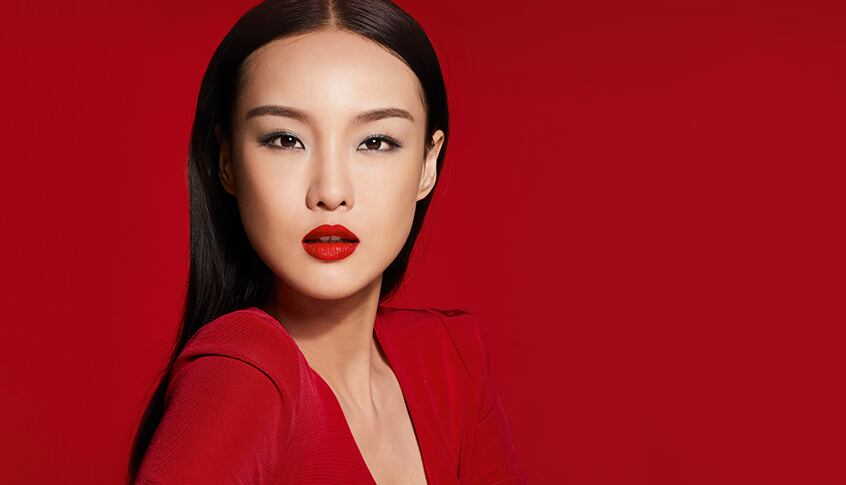In the last few years, consumption upgrading was a key driver for the overall growth of the cosmetics market
According to a 2019 Mintel survey, 38% of women used more premium products to ‘improve skin’.
Due to the COVID-19 outbreak, we are likely to see a reverse effect and a decline in the prestige sector.
Personal care conglomerate Proctor & Gamble (P&G) reported that while organic sales rose 1% for the third quarter of fiscal 2020, its net sales and earnings dipped due to the impact on its prestige brand SK-II.
According to Jon R. Moeller, vice chairman COO and CFO of P&G, the Japanese brand declined by more than 20% in Q3.
The was caused by pandemic-related disruption of retail markets across Asia and a sharp reduction in travel retail sales, which accounts for approximately $1bn in business for P&G.
The L’Oreal Group’s luxury division was similarly affected by the pandemic, shrinking by 9.3% due to the heavy blow to the make-up category, said Jean-Paul Agon, Chairman and CEO of L'Oréal.
This was attributed to the closure of most brick-and-mortar and airport sales outlets in all of its major markets.
Moving away from prestige?
Mintel analyst Laurie Du believes if the pandemic is not brought under control, there is a chance the consumer may turn away from prestige beauty, at least temporarily.
“We are not saying [a trade-down] has already happened, but it will be a highly potential situation if the COVID-19 outbreak continues,” said Du.
According to Mintel’s global COVID-19 research, 37% of respondents said that their financial status had been jeopardised by the outbreak.
This figure is higher among the 18 to 29-year-old age group, which is the core audience of premium beauty products.
In this market environment, prestige beauty brands will find themselves in a less advantageous position compared to more affordable brands.
“Prestige cosmetics probably have less of an advantage because it is non-essential even when the situation turns around. Skin care and other personal care products will be deemed more essential than cosmetics. Consumers will seek alternatives to prestige cosmetics until they are comfortable to indulge again,”
While its luxury division shrank, L’Oréal reported a strong showing from its active cosmetics division. The segment grew 13.2% overall and saw double-digit growth driven in Asia Pacific, driven by China, Japan and Australia.
Its consumer products division was only moderately impacted, decline by 3,6%.
“The Consumer Products Division, however, has seen a more moderate decline, largely because the activity in mass-market retail has been maintained,” said Agon.
Even when lockdowns are lifted, Du emphasised that companies have to consider the financial situations of consumers, which may not recover immediately.
She highlighted that brands will have to take note that some consumers may switch to other brands during the pandemic and not go back to their luxury products.
“The impact remains a question but in the short run, until the economy fully recovers, prestige will take the hit because consumers will not instantly be increasing their spending or resume their way of life in terms of how they buy and spend,” she said.
While it is less likely developing countries like Thailand, Indonesia and the Philippines
In addition, she highlighted that it will depend on other factors, like the return of a pre-pandemic lifestyle and the easement of travel restrictions.
“The potential hit for luxury cosmetics brands will depend on the recovery of the economy and the normal lifestyle – the day we can take off the masks and the ease of social distance to some degree – and the ease of travel limits, as travel retail is one of the biggest contributors to luxury cosmetics brands.”
Online is key
As the pandemic develops online channels will play a vital role in prestige cosmetics brands.
Both P&G and L’Oreal have experienced sharp growth in its e-commerce business, which grew about 35% and 52.6% respectively.
The Shiseido Company also credited its rebound in China to its strong e-commerce set-up.
“In China, where e-commerce is very developed, there has actually been significant growth due to people shopping during the lockdown. Our company’s products and sales are growing in China through that method,” said president and CEO Masahiko Uotani.
The resilience of e-commerce poses an opportunity for luxury brands, said Du.
“For prestige brands, it's important to adjust product strategy to meet consumers' needs and make innovation in online shopping experiences, such as the use of technology like AI and VR to improve online shopping experience.”
Additionally, she advised brands to improve the online shopping experience and “seek new ways to communicate” such as offering online beauty advisor services and live streaming.
The reinvention should not stop there. As consumers return to the streets and shopping malls, Du said it was important to carry on the online experience offline.
“Prestige beauty is still biased towards brick-and-mortar stores because consumers seek experience and the privilege to step into one. It's important to make offline stores as an image-building vehicle and consider how to connect online and offline better in the future.”
She elaborated that prestige beauty brands will need to create reasons for consumers to visit their stores and noted there was an opportunity to make up for retail experiences lacking during the COVID-19 crisis.
Du stressed the importance of reinforcing online channels post-COVID-19.
“[Prestige brands] need to readjust themselves to get used to this new normal of shopping online –even for prestige items. Digital experiences can also be created to maintain engagement with consumers, and this is something prestige beauty needs to start thinking about.”
She concluded: “Disruption is not new to the beauty industry, only in various forms, and in light of this global situation that we are in, prestige beauty will need to be fluid and redefine the role of retail, online and offline.”





